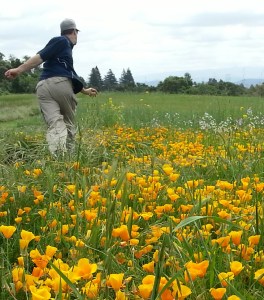If you’re like me, the desire to ‘sell’ the sport of disc golf to anyone who crosses your path comes as naturally as breathing, blinking, and throwing a hyzer. As decent human beings we want others to enjoy the benefits of the sport we love, right? So the sales pitches just gush forth. But are they as compelling and effective as they can possibly be?
While displaying a sincere belief in and passion for something is a powerful element of effective sales, the message itself is also important. And so is tailoring the message to the audience. But often we don’t have time for anything but a quick summary of the game and it’s best features. Normally this means quickly explaining that disc golf is fun, anyone can play, and anyone can afford it.
My personal elevator pitch, when I have a minute or less to share the virtues of disc golf with people or persons I may not know well, goes something like this:
“Golf really is a great game. You get fresh air and low impact exercise, can play alone or with others, and the strategic and mental challenges ensure that it never gets old. It also builds important life skills like integrity, self-control, patience, and humility. BUT . . . traditional golf is saddled with numerous limitations that make those wonderful traits inaccessible to the majority of people in the world. Either the cost is too high, or it takes too long to play a round, or it’s too difficult, or the environmental impact is troubling. Disc golf, on the other hand, retains everything that is great about golf while eliminating each of the barriers.”
If I have a chance for a more in-depth discussion, I’ll drill down to more details on one or more of disc golf’s high points based on what I know about those listening to me.
When money is obviously an issue I will stress the affordability, pointing out that most courses are free to play and one needs only a few inexpensive discs. Most who know little about the sport are usually surprised that courses are usually free because they are aware that ball golf courses all charge significant fees.

If I’m speaking to someone who feels like they need more exercise, I’ll explain that:
- Disc golf can provide whatever level of exercise a person wants, from walking only a few holes at first on a flat course to hours of hiking or even running over varied terrain
- I’ve known numerous people who have lost significant weight and improved their health in other ways by simply playing disc golf on a regular basis
- The casual, open nature of the sport makes it a great choice for those having a hard time fitting exercise time into a busy schedule
As a former baseball player, I frequently run into old teammates who long for a new competitive outlet. In these and similar situations I go straight to explaining how much more “golf-like” disc golf is than most assume it to be. For instance:
- The constant risk-reward decisions that are a hallmark of golf are ever-present in disc golf as well
- The basic throwing techniques, while easy to quickly learn at a functional level, can take years to achieve a semblance of mastery
- Long throws provide that “Feat of Strength” rush that one gets from baseball, golf, and other sports
- Lest someone think we’re hurling the same beach Frisbee again and again, I point out that differences in the design and weight of discs provide players with more than enough (sometimes too many!) equipment options
When speaking to someone whose concern for the environment shapes many of the choices they make, I am quick to contrast disc golf with ball golf in that context. Since the state of the playing surface matters little, a disc golf course can exist almost anywhere without any manipulation of the natural setting. Although some courses are installed in groomed park areas, watering, mowing, and landscaping are not necessary. If someone wants to play a sport and experience nature at the same time, you can’t do better than disc golf.

Disc golf is steadily growing, mostly due to word of mouth and sales pitches similar to the ones described above. Because of the game’s supreme accessibility, a large percentage of those who try it become enthusiasts themselves in short order. It is my opinion, however, that should these facts about disc golf become more widely available, the drip-drip-drip of disc golf growth will become a deluge. From dripping point to tipping point.
I’ve felt this way for some time, and it led me to write a book called The Disc Golf Revolution. After a successful Kickstarter campaign, the book should be available by Fall 2017. You can learn more at http://playdiscgolf.org.
Jack Trageser is the owner of School of Disc Golf and author of Three Paths to Better Disc Golf and The Disc Golf Revolution. He resides in Santa Cruz, CA
















